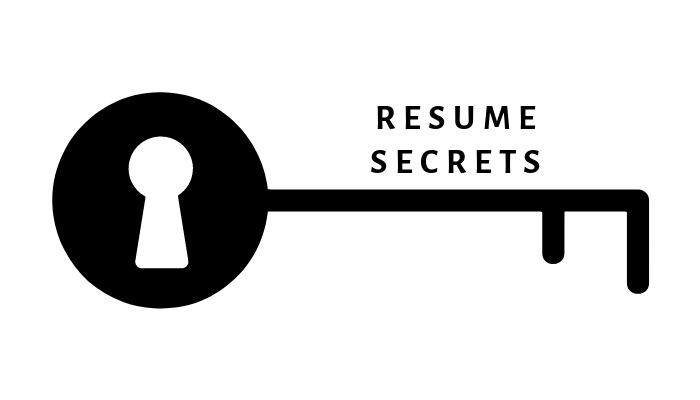Table of contents:
- ● Resume design secrets to stand out from the crowd
- ● Use the right amount of whitespace
- ● Lay emphasis on the good stuff
- ● Don’t sleep on fonts
- ● Why not make an infographic?
- ● Tap into storytelling while you’re at it
- ● Modules are great for structure
- ● Smile!
- ● Don’t overdo it
- ● Adapting to various mediums
- ● Sidebar
- ● Choose your colors wisely
- ● Mnml?
- ● Text is as important
- ● Wrapping things up
Resume design secrets to stand out from the crowd

People often underestimate the importance of a well-executed resume. This document alone can change your career forever and investing a few extra hours into it will only maximize your chances of landing the job that you covet so much.
Whether you’re looking for full-time work or searching for freelance jobs, you need to put yourself in the position of your potential employer. Imagine you had no idea about yourself. Imagine you dropped all of your preconceptions about your personality and you had to reflect your character via your resume’s design.
How would you approach this task? How would you design your resume? What graphic elements would you use to emphasize your strongest features?
In this article, we’ve compiled a broad set of essential elements that you need to consider including in your creative resume design. Let’s dive right in, shall we?
Use the right amount of whitespace
Very often people that don’t invest too much time into the design and layout of their resume will focus on text only, which typically results in a poorly spaced and poorly organized mess, which Human Resources specialists detest.
It’s essential to format your resume so that it has the right amount of whitespace in it. This will ensure that your CV will be easy to read. The best resume templates of 2019 tend to be less bloated and incorporate more whitespace.
Lay emphasis on the good stuff
Use graphic elements to attract the HR’s specialist’s attention to the achievement you believe are central in your CV. You can use simple shapes like squares, circles, and so forth. Alternatively, you can look into adding a little bit of extra shadowing to the font in the bits of text you want to draw attention to, especially if it’s a UX or graphic designer resume.
Also, an interesting trick is to place the important bits of information in the Terminal areas, according to Gutenberg’s principle of reading gravity. Therefore, it would make sense to integrate your graphic design skill list in the zone where humans naturally pay more attention to. We’re going to discuss reading gravity more thoroughly below.
Don’t sleep on fonts
Fonts are a critical component to readability. Very often candidates make poor font choices, which make their documents simply unreadable. Similarly, people tend to connect to fonts emotionally.
Each font passes on a broad spectrum of emotions and misusing a certain font may cause a certain level of dissonance.
It’s essential that we invest some time into finding the most suitable font for our resume, based on our occupation, age, the information we’re trying to convey, and so forth.
But whatever you do, please, don’t use Comic Sans!
Why not make an infographic?

Humans are visual learners. There is an astonishing difference between the speed we process written text and a set of images.
So let’s say you’re a talented designer and you’re looking to showcase your abilities, why not make a creative professional resume that is pretty much a graphic representation of your professional background.
It would be able to communicate the information about you much faster and, moreover, you’ll be able to demonstrate how creative you can be with such straightforward tasks.
Tap into storytelling while you’re at it
While storytelling isn’t design per se, it has to do with an essential component of design — branding. Conceptually speaking, your resume is just a resume, until you tell an exciting story. Personal accounts can humanize the entity revealing it. Businesses have been using it for a while.
Humans are fundamentally social animals, and their behavior strongly depends on their social interactions. We, as humans, have this odd ability to connect to people who know nothing about, because we can relate to their life experiences.
Hearing another person’s account has an astonishing effect on our bodies. A story that we find captivating or relatable can increase our oxytocin levels, according to Dr. Zak’s research paper, first released in 2013. Oxytocin is one of the “feel good” hormones, which is associated with pleasant social interactions, like hugs and kisses.
By telling a story, you’re actually branding yourself. You’re creating a cue that makes you considerably more memorable.
Modules are great for structure
Breaking down all of the information you’re looking to include in your resume into modules will make it considerably more accessible. It gives your CV more structure and totally removes the need to look for certain information for too long.
Smile!

Did you know that smiling faces can persuade people? Neuroscientists have found that smiles are contagious to the vast majority of people. Typically, smiles engage our mirror neurons, which can identify somebody else’s facial expression and will most probably try to replicate it.
“It’s a great idea to include a photo of you in your resume, the wider the smile — the better. However, it’s important to take into account that people can generally recognize fake smiles, so do it honestly!” — Veronica Wright, Career Advisor at Resumes Centre.
Don’t overdo it
Industries have standards, which we need to abide by. So even though it’s essential to make a resume that stands out, make sure that you don’t overdo it. There are some industries that might not appreciate excessive creativity.
Imagine sending an “infographic-shaped” resume that we discussed previously when applying for a job in the military. That’s not going to work well.
If you’re applying to work in a publishing house or newspaper, it’s best to stick to something more “classic,” rather than over the top.
Adapting to various mediums
When sending out your resume, it’s always a great idea to have a mobile version as well. As many countries are becoming mobile-first in their internet usage, most probably, a CV crafted for mobile along with a traditional one will become a norm within the next 5 years.
There are many peculiarities to designing a mobile resume. When doing so, try to adapt your original CV, but take these basic principles into account:
- Rethink how you’ll use fonts. Since mobile screens are considerably smaller, not all fonts will be as readable.
- Don’t overload your mobile CV with graphic elements, this may have an adverse effect on the document’s readability.
- It’s best to abstain from tables, tabs, and page breaks.
Sidebar

While a sidebar isn’t the hippest of elements in web design, they’re now pretty prolific in resumes. A sidebar has multiple important functions, besides being just a design choice.
A sidebar will considerably increase readability. Ask any writer, copywriter, or designer — when a text is distributed in shorter rows, it becomes significantly easier to read. This is one of the fundamentals of editorial design.
Don’t forget, your goal is to minimize any possible emotional friction between you and the person making the decision to invite you over to an interview.
Of course, they never dismiss you as a candidate solely based on formatting. However, there are numerous small decisions made in the subconscious, which can seriously affect your outcome.
Pat Fredshaw, head of the Essaysupply.com content department emphasizes: “By adding a sidebar, you’re ensuring that your text will be tidily structured and very readable.”
Choose your colors wisely
When used properly, black and white aren’t really a bad option for a resume, despite being the most used colors of them all in this type of document. However, what people seem to forget is that they need a strident color that they’ll use to emphasize certain elements of their resumes.
Previously, we’ve discussed how you can use graphic elements in order to stress important information and draw the reader’s attention. Highlighting certain parts of your resume by using an accent color is an excellent idea design-wise.
“In order to stick to a professional resume design, you need to carefully analyze the colors you use. Don’t hesitate to A/B test your color choices and ask opinions from friends and family.” — Adam McCoy, Tech Writer at Best Writers Canada and Write Load.
Mnml?
Why not try and go minimal? Previously, we touched on the importance of using color or graphic elements to stress certain parts of your resume. But what if you didn’t need to? What if you took out all the unnecessary bits and colors from your resume and made it super minimalistic?
However, there are a few essential aspects you need to take into account when attempting a minimalist resume.
First, you’ll most probably want to ditch curly fonts with serifs. Opt for clean sans-serifs that won’t be too irritating to read.
Secondly, it’s best not to use colors that are too ardent and saturated, like red or green, because they’ll be taking up too much attention, which is the last thing you want in a clean resume. Choose a simple resume format, but stick to colors that derive from black, like different variations of grey.
Text is as important
Text is a central component of a well-executed design. It’s always a good idea to consult a specialist when writing the headlines and bios to your resume. It’s not just a matter of grammar issues, stylistic errors might creep in too.
There are many services and tools that can be helpful when working on your text. You can reach out to businesses like FlashEssay and Online Writers Rating to get a consultation on the text you’ve written, or optionally, you can buy a Grammarly license. If you’re wondering whether the Premium plan is worth it, try reading this review.
Wrapping things up
As you can see, there’s no single thing that you can call a “simple resume design.” It’s all about what you’re looking to convey. There are a few rules of thumb that will make your resume considerably more visible in an endless heap of applications:
- Make sure your text is easy to read by formatting it properly and using the right font.
- Don’t overdo it. Depending on the industry you’re in, a more straightforward and conservative approach will be better.
- Make sure that your document has no grammar issues.
- Choose colors wisely.
- Make a mobile version too!
- Use a photo of yourself
- Tap into storytelling.
- And finally, don’t bloat your resume — use enough whitespace.

Leona Henryson
Leona Henryson – freelance writer and UX designe, and a contributing writer for various blogs. When she is not writing or designing, she is swimming, hiking, and, weather permitting, snowboarding. At Design Wizard she prefers to use Add Logo To Video Online and Video Trimmer tool.


